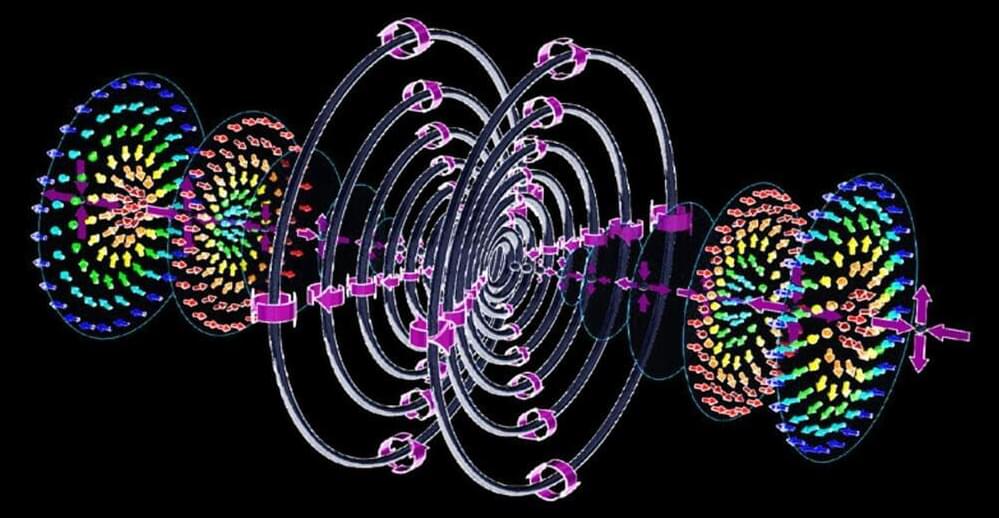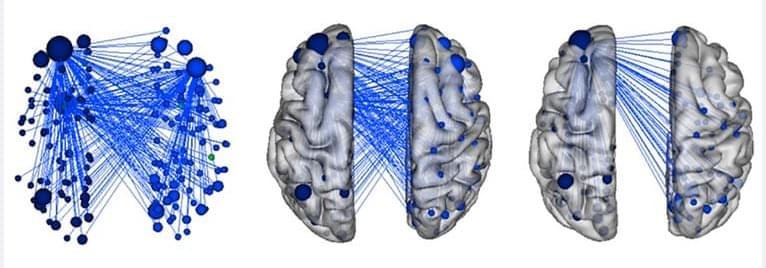After heated debates and disappointments over past candidates of Martian life, NASA scientists have a new rubric for scoring signs of extraterrestrial life.


AI & computational technology for improving drug discovery & development — mati gill, CEO, AION labs.
Mati Gill is the Chief Executive Officer, of AION Labs (https://aionlabs.com/), a company recently launched and backed by a coalition of pharma and tech leaders, including AstraZeneca, Merck, Pfizer, Teva, Amazon Web Services (AWS), and the Israel Biotech Fund (IBF) and Israel Innovation Authority, to improve the whole drug discovery & drug development process with AI and computational biology.
Mati has an MBA (Healthcare & Innovation) and BS degree in law from Reichman University / IDC Herzliya, and has over a decade of experience in leadership roles in the biopharma industry, including most recently as Head of Government Affairs, Corporate & International Markets, at Teva Pharmaceuticals.
Mati also spent 4 years as Member Of The Board Of Advisors and Directors, at Sanara Ventures, a healthcare investment platform backed by Philips & Teva, providing Pre-seed, Seed and A round financing to young companies.
Prior to teva, mati was chief of staff to israel’s minister of public security.


No. Eventually billionaires will run out of OUR money, NOT the other way around. I love the things and companies he’s created. I love the industries he’s revolutionized and the massive Kickstart he has given to our entire species and it’s extrasolar future. He is INARGUABLY a brilliant man. But he’s also a shitty human being. He’s like so many other brilliant people that enjoy public life and the sound of his own voice who can all too often forget that they are NOT experts in EVERYTHING ELSE just because experts on something else. Musk is just another example of that kind of ego overspill. It’s not the first time he’s done it, and it will NOT be the last or worst occurrence of… Let’s call it the “Big brain on Brad golden suitcase of indeterminate origin syndrome.”
💦🤯💦
☝🙄💼
💥🙏💥
Elon Musk is among those finding fault with a proposed annual tax on billionaires’ unrealized capital gains by Democratic lawmakers, with the world’s richest man agreeing with the view that this type of tax eventually would hit others as well.

Topology in optics and photonics has been a hot topic since 1,890 where singularities in electromagnetic fields have been considered. The recent award of the Nobel prize for topology developments in condensed matter physics has led to renewed surge in topology in optics with most recent developments in implementing condensed matter particle-like topological structures in photonics. Recently, topological photonics, especially the topological electromagnetic pulses, hold promise for nontrivial wave-matter interactions and provide additional degrees of freedom for information and energy transfer. However, to date the topology of ultrafast transient electromagnetic pulses had been largely unexplored.
In their paper published in the journal Nature Communications, physicists in the UK and Singapore report a new family of electromagnetic pulses, the exact solutions of Maxwell’s equation with toroidal topology, in which topological complexity can be continuously controlled, namely supertoroidal topology. The electromagnetic fields in such supertoroidal pulses have skyrmionic structures as they propagate in free space with the speed of light.
Skyrmions, sophisticated topological particles originally proposed as a unified model of the nucleon by Tony Skyrme in 1,962 behave like nanoscale magnetic vortices with spectacular textures. They have been widely studied in many condensed matter systems, including chiral magnets and liquid crystals, as nontrivial excitations showing great importance for information storing and transferring. If skyrmions can fly, open up infinite possibilities for the next generation of informatics revolution.
The energetic phenomena known as Fast Radio Bursts (FRBs) are one of the greatest cosmic mysteries today. These mysterious flashes of light are visible in the radio wave part of the spectrum and usually last only a few milliseconds before fading away forever. Since the first FRB was observed in 2,007 astronomers have looked forward to the day when instruments of sufficient sensitivity would be able to detect them regularly.
That day has arrived with the completion of the 500-Meter FAST Radio Telescope (aka. Tianyan, “Eye of Heaven”). Since it commenced operations, this observatory has vastly expanded the number of detected FRBs. In fact, according to research led by the National Astronomical Observatories of the Chinese Academy of Sciences (NAO/CAS), the observatory detected a total of 1,652 independent bursts from a single source in 47 days.
The research, which recently appeared in the journal Nature, was conducted by researchers from the Commensal Radio Astronomy FAST Survey (CRAFTS) project. CRAFTS includes researchers from the Cornell Center for Astrophysics and Planetary Science, the Max-Planck-Institut für Radioastronomie, the Commonwealth Scientific and Industrial Research Organisation (CSIRO), and multiple universities in China, Australia, and the U.S.

Taiwan has made a battery-powered exoskeleton suit that will allow its soldiers to run faster and carry heavy objects.
This is the first-generation suit made by the National Chung-Shan Institute of Science and Technology, according to The South China Morning Post. The suit is a part of a four-year project called the “Taiwan Ironman program.” It has a budget of $5.74 million and the goal of providing Taiwan’s soldiers with a lower-body exoskeleton to increase their strength and endurance.
“To reduce fatigue of soldiers in carrying heavy facilities… we started developing the powered suit for the military in 2020,” Jen Kuo-Kuang, head developer of the project, said in comments at a news conference obtained by the SCMP.

𝙈𝙖𝙘𝙝𝙞𝙣𝙚 𝙇𝙚𝙖𝙧𝙣𝙞𝙣𝙜 𝙍𝙚𝙫𝙚𝙖𝙡𝙨 𝐁𝐫𝐚𝐢𝐧 𝙉𝙚𝙩𝙬𝙤𝙧𝙠𝙨 𝐈𝐧𝐯𝐨𝐥𝐯𝐞𝐝 𝐢𝐧 𝐂𝐡𝐢𝐥𝐝 𝐀𝐠𝐠𝐫𝐞𝐬𝐬𝐢𝐨𝐧
𝙔𝙖𝙡𝙚 𝙐𝙣𝙞𝙫𝙚𝙧𝙨𝙞𝙩𝙮
Child psychiatric disorders, such as oppositional defiant disorder and attention-deficit/hyperactivity disorder (ADHD), can feature outbursts of anger and physical aggression. A better understanding of what drives these symptoms could help inform treatment strategies. Yale researchers have now used a machine learning-based approach to uncover disruptions of brain connectivity in children displaying aggression.
In the first study of its kind, Yale researchers use machine learning to find large-scale neural connections linked to aggressive behavior in children.
Track code: TD-3
Abstract:
Solar Sails are at the same stage of engineering development as electric motors were in the 1830’s. Each attribute of solar flux has been examined in isolation, such as photon, proton, plasma, and electrodynamic systems. This talk recommends designing a simple baseline system that converges multiple propulsion methods into optimized systems, as is currently done with electric motors. Many convergences can come from this solution space. Once a baseline design is created, AI genetic algorithms can “flight test” and refine the designs in simulation to adjust proportions and geometry. Once a base design is refined, a second AI evolution pass would design fleet systems that flock like birds to optimize performance. These could fly as a protective shield around Mars crewed fleets, provide space based solar power, deploy rapid reaction probes for interstellar comets, and be used in NEO asteroid mining. In the long term, fleets of solar energy management vehicles can provide orbital Carrigan event protection and Martian solar wind protection for terraforming. This talk is also a case study in how technology revolutions happen, and how to accelerate the creation and democratization of technical solutions.
From the 24th Annual International Mars Society Convention, held as a Virtual Convention worldwide on the Internet from October 14–17, 2021. The four-day International Mars Society Convention, held every year since 1,998 brings together leading scientists, engineers, aerospace industry representatives, government policymakers and journalists to talk about the latest scientific discoveries, technological advances and political-economic developments that could help pave the way for a human mission to the planet Mars.
Conference Papers and some presentations will be available on www.MarsPapers.org.
For more information on the Mars Society, visit our website at www.MarsSociety.org.
#MarsSociety #MarsSocCon2021

26 Oct 2021 — Public Chinese government records reviewed by the Good Food Institute (GFI) APAC indicate that significant funds are being allocated to help the nascent alternative protein sector optimize and scale up – as was previously done for the nation’s development of solar panels, lithium-ion batteries and electric vehicles.
While Chinese funding for alternative protein remains a tiny proportion of what the nation is capable of, these moves by various government entities demonstrate the scope of interest among local officials, which could potentially position China at the forefront of the next big food tech boom.
“There is no pathway to achieve the climate goals set out in the Paris Agreement without changing how we produce protein, but encouraging new evidence suggests that Chinese leaders understand the massive benefits of making meat from plants and growing it directly from cells,” stresses the GFI.